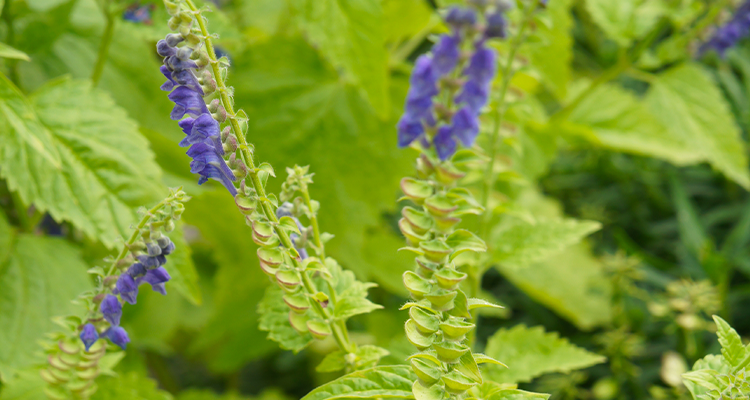
Protecting botanicals from adulteration: the importance of DNA barcoding
A test that uniquely identifies each living species, similarly to a UPC barcode, can ensure the safety and compliance of botanical and herbal products. This is the essence of DNA barcoding, a technique with many important applications, including the fight against adulteration. Discover more in this article.
What is DNA barcoding and how does it work?
DNA barcoding is a method of species identification derived from molecular biology. This technique allows the identification of any animal or plant species based on what "is written" in its DNA, distinguishing it from all other species. DNA barcoding uses a small DNA sequence obtained from a standard part of the genome and compares it with the sequences contained in an official database, looking for the best match.
To get a practical idea of how this works, just think of a supermarket scanner: the checkout reader scans the UPC barcode on an item and compares it with the reference database to identify the product in question, with all its associated features (price, discount, etc.).
The technique of DNA barcoding was first introduced in 2003 by Canadian researcher Paul D. N. Herbert and has since become established worldwide. Its benefits and implications are many:
- It is an important tool for ecology and biodiversity conservation, as it facilitates the classification of species and their habitat;
- It is essential for the identification of cryptic species, i.e. species that are morphologically identical to others but genetically quite distinct;
- It is the most effective technique to ensure the quality and safety of botanical products, preventing counterfeiting and adulteration, as we will clarify below.
In order to succeed, DNA barcoding requires databases (or molecular libraries) of different species. Many data are available in the international gene database, GenBank, while the international association for DNA barcoding (IBOL, International Barcode of Life) has created a dedicated database where researchers from all over the world can deposit the DNA sequences of each organism.
DNA barcoding as a technique for botanical species identification
As mentioned, DNA barcoding is crucial in the correct identification of botanical species. This applies not only to plants but also to botanical extracts present in many different everyday products (food, pharmaceuticals, cosmetics, etc.).
For companies in the field of plant extracts, adopting techniques such as DNA barcoding allows them to ensure the quality and safety of raw materials and the final product.
Companies like ours rely on international suppliers: the raw materials used for our extracts usually arrive in the warehouse dried and cut, making their morphological analysis sometimes difficult. Even the analytical techniques provided by the Pharmacopoeia can fail when plant species are very close to each other. In these cases, DNA barcoding proves to be the most reliable methodology. It doesn’t matter if the sample is dried or powdered: even a very small portion of vegetable material is sufficient to perform the analysis. It is even possible to isolate and analyze traces of DNA in extracts and finished products.
The analysis with DNA barcoding allows to exclude possible adulteration and to certify the quality of suppliers. It thus becomes a central element in the reputation of the manufacturer towards its customers and in the safeguard of consumers. In short, DNA barcoding is an essential tool for monitoring the entire supply chain.
Natural extracts and adulteration
Counterfeiting of botanical extracts is a sadly topical issue, as evidenced by a 2019 review published in Frontiers in Pharmacology. A total of 5,957 botanical extract products sold in 37 countries were analyzed using DNA barcoding. Comparing their content to what was declared on the label, it was found that 27% of the products on the global market were adulterated. The percentage varies according to continent: it is highest in Australia (79%) and South America (67%), and lowest in North America (33%), Africa (27%), and Asia (23%).
In Europe, 47% of products presented mislabeling with respect to the botanical species declared, possibly affecting their safety.
The case of Scutellaria
An emblematic case is that of skullcap (Scutellaria lateriflora), one of the most widely used plants in North America and in western herbal medicine against nervous system disorders, with sedative effect.
Historically, Scutellaria has been adulterated with various species of germander such as Teucrium canadense and Teucrium chamaedrys, known for their liver toxicity. This adulteration was noted in the U.S. market as early as 2005.
The example of Scutellaria shows us how important DNA barcoding is not only to ensure the quality of plant extracts and defend against adulteration but also to protect the safety of drugs and their consumers.
Discover EPO's DNA certified extracts
At EPO we prioritize the efficacy and safety of our products. An accurate determination of all the components is carried out through sophisticated instrumental analysis, which has been supported in recent years by DNA barcoding analysis. The result is our DNA-certified line, which you can find here.
The growing diffusion of DNA barcoding is the premise for a future in which quality and safety go hand in hand. There is still a long way to go, but the path is clear.